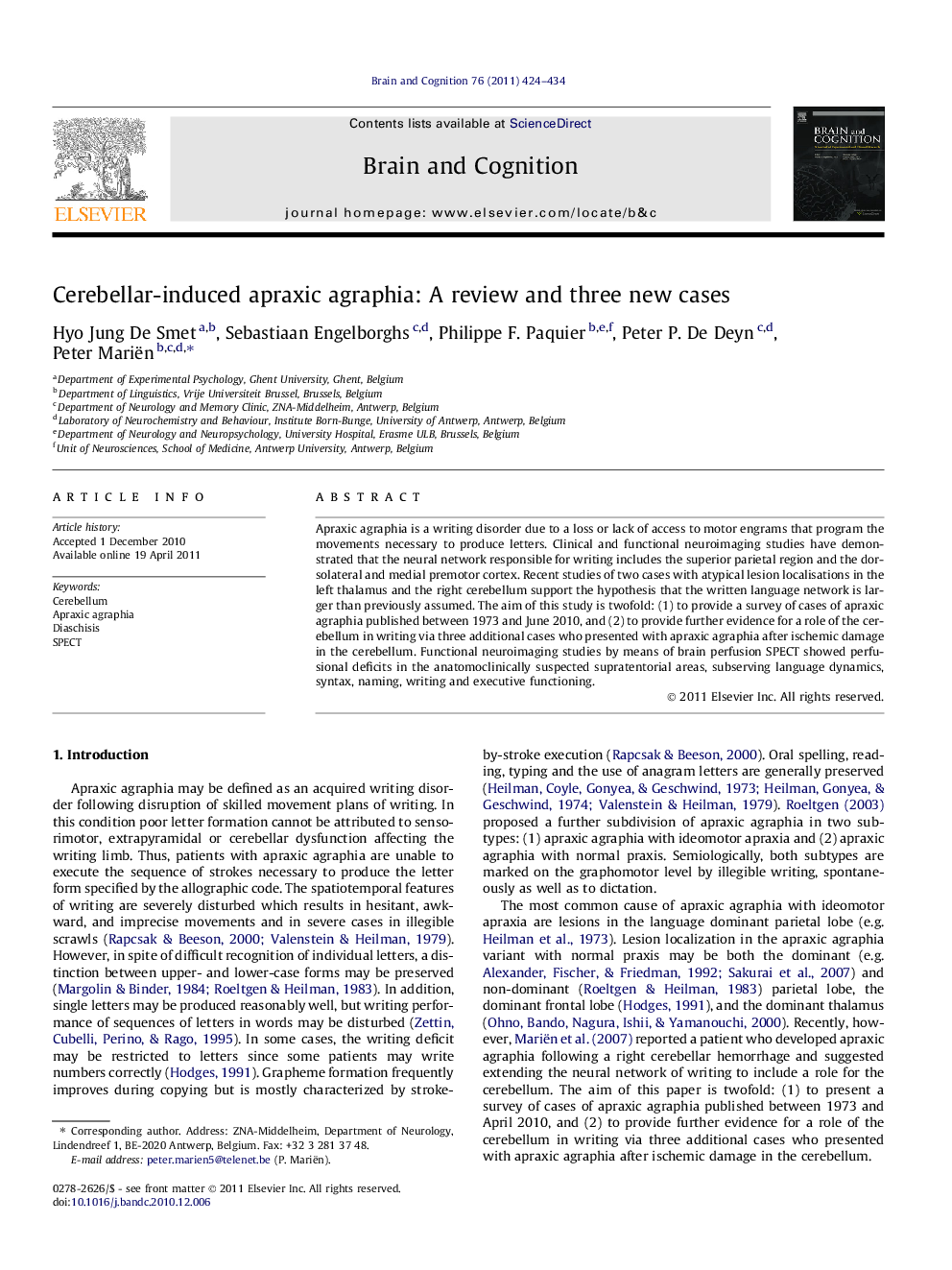| Article ID | Journal | Published Year | Pages | File Type |
|---|---|---|---|---|
| 924179 | Brain and Cognition | 2011 | 11 Pages |
Apraxic agraphia is a writing disorder due to a loss or lack of access to motor engrams that program the movements necessary to produce letters. Clinical and functional neuroimaging studies have demonstrated that the neural network responsible for writing includes the superior parietal region and the dorsolateral and medial premotor cortex. Recent studies of two cases with atypical lesion localisations in the left thalamus and the right cerebellum support the hypothesis that the written language network is larger than previously assumed. The aim of this study is twofold: (1) to provide a survey of cases of apraxic agraphia published between 1973 and June 2010, and (2) to provide further evidence for a role of the cerebellum in writing via three additional cases who presented with apraxic agraphia after ischemic damage in the cerebellum. Functional neuroimaging studies by means of brain perfusion SPECT showed perfusional deficits in the anatomoclinically suspected supratentorial areas, subserving language dynamics, syntax, naming, writing and executive functioning.
► Classical neural network of writing includes left parietal and prefrontal regions. ► Description of three patients with apraxic agraphia after focal cerebellar damage. ► Hypoperfusion (SPECT) in the anatomoclinically suspected supratentorial areas. ► Mechanism of cerebello-cerebral diaschisis explains apraxic writing deficits. ► Evidence for a role of the cerebellum in the neural network of writing.
